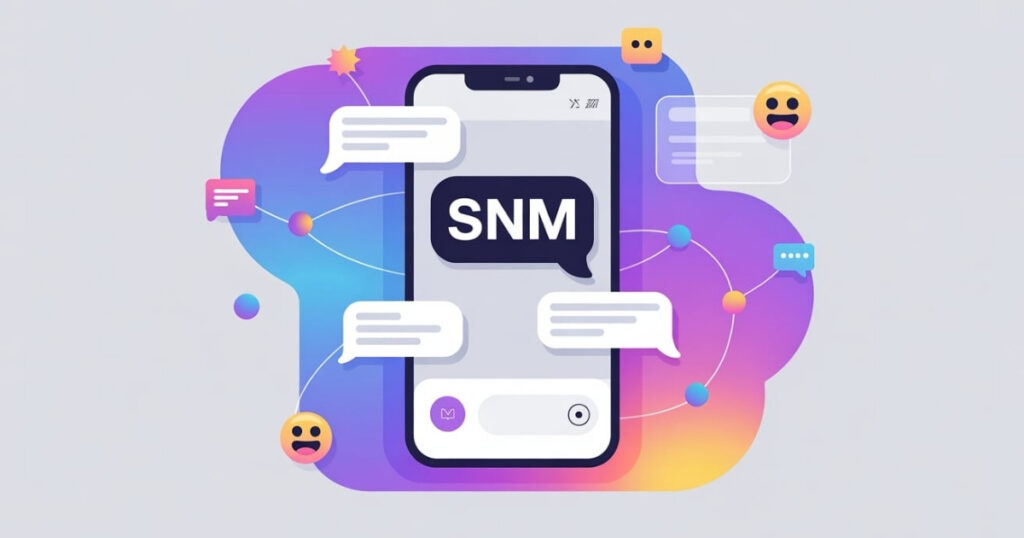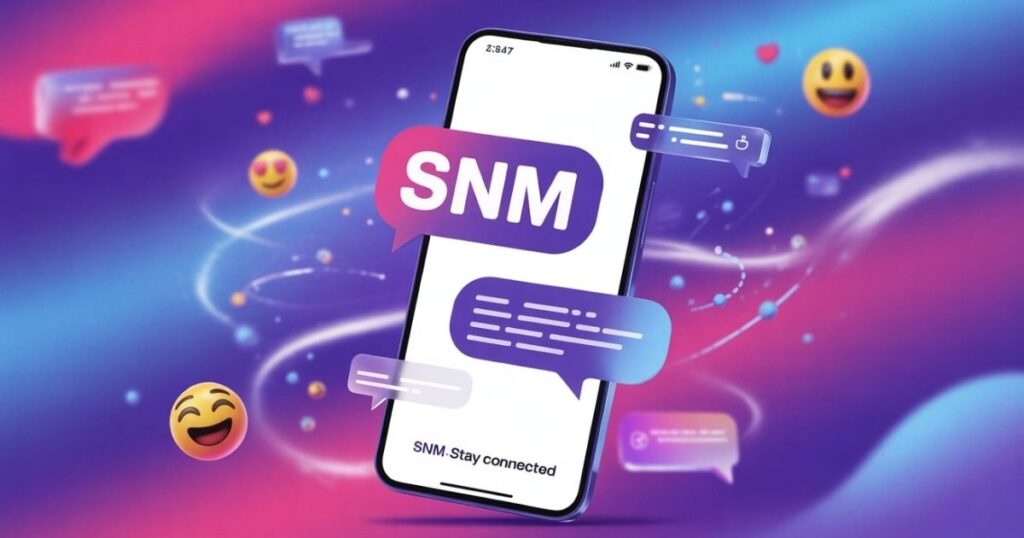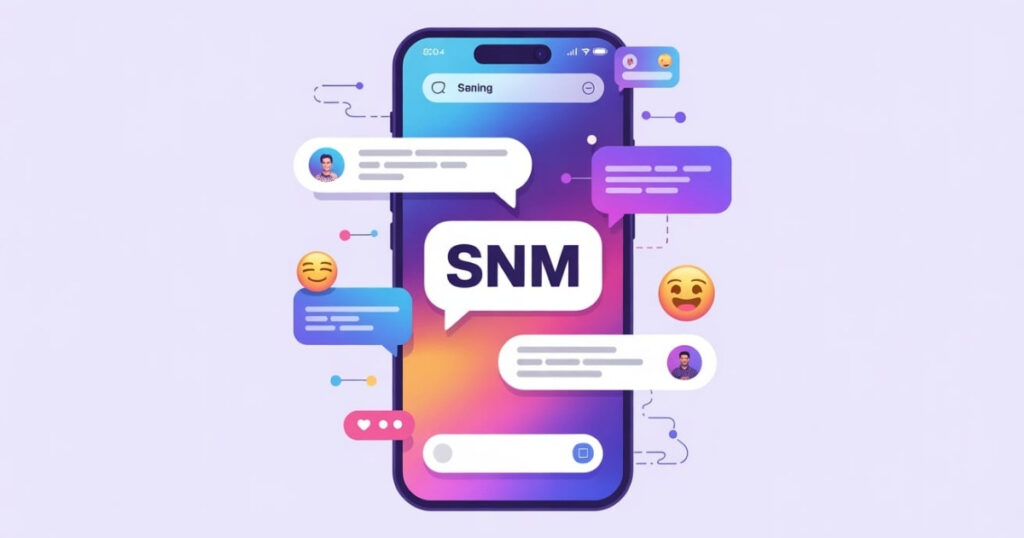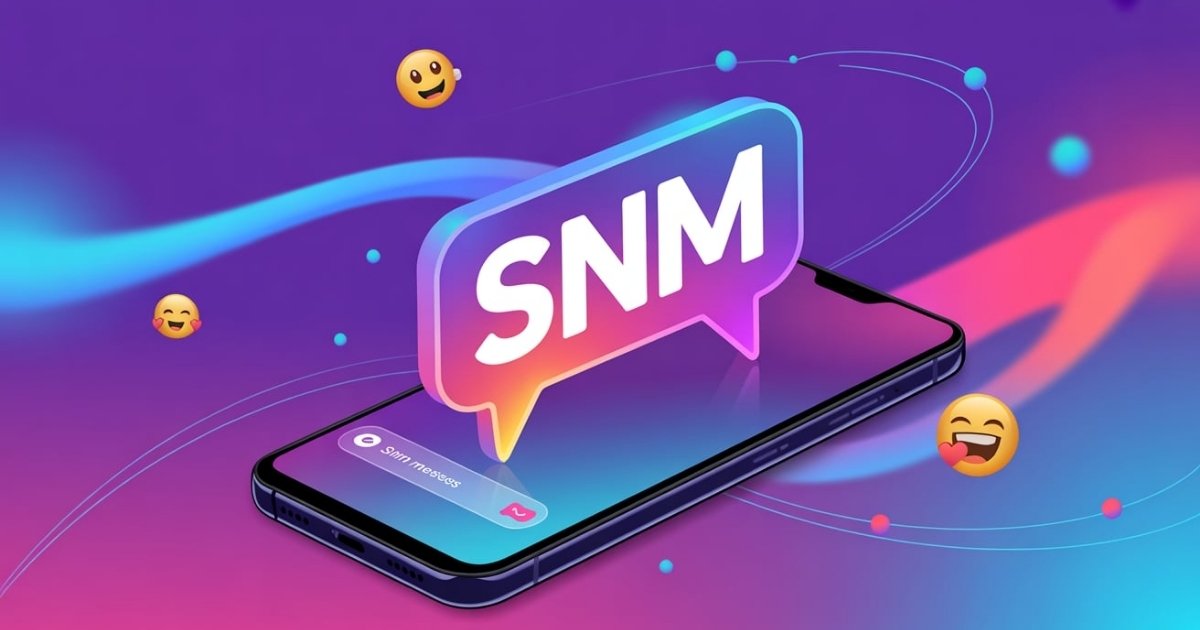Ever scrolled through your messages and spotted “SNM” staring back at you? You’re definitely not alone. This tiny three-letter acronym has taken over American texting culture, and understanding its SNM meaning in text can save you from awkward misunderstandings.
Digital communication trends shift faster than ever. What worked yesterday might feel outdated today. Say No More slang represents exactly this evolution a phrase that moved from street corners to smartphone screens across the United States. Whether you’re a confused parent, a curious millennial, or someone who just wants to keep up, this guide breaks down everything about SNM.
What Does SNM Mean in Text? Core Definition Explained
Let’s cut straight to it. SNM stands for “Say No More.” That’s the primary SNM definition you’ll encounter in 99% of conversations. It’s shorthand for complete understanding a digital nod that says, “I get it. No further explanation needed.”
The SNM acronym meaning evolved from casual American slang. People have been saying “say no more” in spoken conversation for decades. The phrase naturally jumped into texts as smartphones dominated communication. Why type twelve characters when three letters convey the same message?
Breaking Down the Letters
Here’s the simple breakdown:
- S = Say
- N = No
- M = More
This SNM texting meaning works because it captures a complete thought efficiently. Modern texting prioritizes speed without sacrificing clarity. SNM achieves both goals beautifully.
Context matters enormously when interpreting SNM. You’ll typically see it after someone shares information, makes a suggestion, or references shared knowledge. The acronym confirms mutual understanding instantly. It’s like a verbal handshake compressed into digital shorthand.
SNM Meaning in Text: When and How It’s Commonly Used
Understanding when SNM appears naturally helps you use it correctly. The meaning of SNM shines brightest in specific scenarios.
Typical situations include:
- Making plans with friends who already know your preferences
- Responding to inside jokes or shared references
- Acknowledging information without needing extra details
- Politely shutting down unnecessary explanations
The social dynamics behind SNM usage reveal something important. This isn’t casual slang you throw around with strangers. SNM in conversations requires familiarity and trust. Close friends use it effortlessly because they share context. Acquaintances might hesitate because they lack that foundation.
Platform preferences matter too. iMessage dominates SNM territory in the USA. Instagram DMs come in second. Twitter replies feature it occasionally. Snapchat and TikTok comments use SNM when space is tight. Each platform shapes how digital conversation flows, and SNM adapts accordingly.
Real Usage Patterns
Different age groups approach SNM differently. Gen Z teens sprinkle it liberally throughout their online communication. Millennials use it selectively with close contacts. Older Americans might recognize it without fully embracing it. These generational patterns reflect broader messaging culture shifts happening nationwide.
Examples of SNM in Conversations Between Friends or Online

Let’s examine real examples of SNM usage to see this acronym in action.
Example 1: Making Plans
- Alex: “Want to grab pizza tonight?”
- Jordan: “SNM, I’m starving already”
This works perfectly. Jordan confirms interest without wasting words. The shared craving for pizza makes additional discussion unnecessary. That’s how to use SNM at its finest efficient and clear.
Example 2: Acknowledging Information
- Taylor: “Did you see what happened at school?”
- Morgan: “SNM, I heard everything from Sarah”
Morgan signals complete awareness. No recap needed. This SNM reply example shows how the acronym prevents redundant conversation. It respects both people’s time while maintaining connection.
Example 3: Inside Knowledge
- Casey: “Should I bring snacks to your place?”
- Riley: “SNM, you know what I like”
Here’s where intimacy matters. Riley trusts Casey’s knowledge of their preferences. This SNM message usage only works between people who share history. Strangers couldn’t pull this off successfully.
Social Media Applications
SNM in chat examples extends beyond private texts. Instagram comments frequently feature it:
“This outfit is fire 🔥”
“SNM, I see you!”
TikTok captions use SNM for impact. Twitter threads employ it when users share viral moments. These SNM responses keep casual chat slang moving fast across platforms.
SNM as “Say No More”: What It Implies in Digital Talk
The power of Say No More slang lies in what remains unsaid. When someone drops SNM, they’re making several statements simultaneously.
First, “I understand completely.” No additional explanation required. Second, “We’re on the same page.” Mutual knowledge exists between you. Third, “Let’s keep moving.” The conversation doesn’t need to stall here.
This casual expression reflects American values around efficiency. Time matters. Attention spans shrink. SNM respects both realities. It’s a texting slang solution to modern communication challenges.
Conversation Control
SNM can either end topics or continue them, depending on context. Sometimes it definitively closes discussion. Other times it acknowledges a point before shifting gears. Reading the room even digitally determines which function SNM serves.
There’s subtle power dynamics at play too. Using SNM confidently signals social awareness. It shows you’re comfortable with abbreviated communication. However, misusing it can seem dismissive or presumptuous.
Tone and Emotion Behind Using SNM in Text Messages
Tone in texting creates endless possibilities for misinterpretation. SNM multiplies those challenges because it’s so brief. The emotional context surrounding those three letters varies wildly.
Reading Emotional Intent
Enthusiastic: “SNM! Let’s do this!”
Agreeable: “SNM, totally get it”
Dismissive: “SNM…” (with ellipsis)
Humorous: “SNM 😂” (with emoji)
Punctuation completely transforms message tone. Exclamation points inject energy. Periods create seriousness or annoyance. Emojis soften or emphasize meaning. Capitalization matters too “SNM” hits differently than “snm.”
The relationship history between texters shapes interpretation dramatically. Your best friend’s SNM reads differently than your coworker’s. Previous conversation topics influence how slang emotion registers. Time delays before sending SNM add another layer.
Potential misunderstandings about SNM emerge from these complexities. Someone might intend friendly efficiency but communicate rudeness accidentally. Communication style differences between generations create friction. What feels casual to Gen Z might seem curt to older recipients.
Variations of SNM in Slang and Other Messaging Shortcuts

While “Say No More” dominates, alternative meanings exist in specific contexts.
Other SNM interpretations:
- “Slay No Matter” (emerging among fashion/beauty communities)
- “So Not Me” (less common, context-dependent)
- Industry-specific uses (rare in general conversation)
These variations of SNM slang remain niche compared to the primary definition. Most Americans encountering SNM will interpret it as “Say No More” automatically.
Related Quick Replies
| Acronym | Meaning | Similar Function to SNM |
| Bet | Agreement/confirmation | Yes |
| Word | Acknowledgment | Yes |
| Facts | Strong agreement | Somewhat |
| FR | For real/emphasis | No |
| Say less | Same as SNM | Identical |
Say less meaning and SNM function identically. They’re interchangeable texting abbreviations serving the same purpose. Some regions prefer “say less” while others stick with SNM. Both represent the same slang phrase compressed for digital speed.
SNM alternatives include combining it with other terms. “SNM bro” adds familiarity. “SNM fr” emphasizes authenticity. These slang shortcuts evolve constantly as users experiment with texting slang combinations.
Why SNM Has Gained Popularity in Social Media Texting
The explosion of SNM reflects broader digital communication trends reshaping American conversation. Several factors drove this popularity in social media specifically.
Information overload hits everyone constantly. Americans consume endless content daily. Attention spans contract under this pressure. SNM offers relief a quick acknowledgment that doesn’t demand mental energy. It’s a fast response to overwhelming digital noise.
Gen Z language innovation accelerated SNM’s spread. Younger users create and adopt short codes rapidly. TikTok trends featuring SNM went viral. Instagram influencers incorporated it into captions. These viral expressions gained momentum through repetition and cultural cachet.
Platform algorithms reward brevity. Twitter’s character limits encouraged conversation shortcuts. Instagram’s visual focus made concise captions valuable. SNM fit perfectly into these trending slang ecosystems. It became an online phrase optimized for digital trends demanding efficiency.
Meme culture amplified SNM further. Joke formats utilized the phrase repeatedly. Viral videos explained its meaning to confused older users. Each iteration spread SNM deeper into mainstream American messaging culture.
Misunderstandings or Confusions About SNM Meaning in Text
Despite its popularity, misunderstandings about SNM happen frequently. Several common mistakes trip people up.
Typical errors include:
- Confusing SNM with other acronyms like “SMH” (shaking my head)
- Using SNM in inappropriate professional contexts
- Misreading dismissive tone as friendly efficiency
- Assuming shared knowledge that doesn’t actually exist
Generational gaps create significant confusion. Parents puzzle over their children’s Gen Z texting language. Millennials sometimes misinterpret Gen Z phrases despite using their own slang. Older Americans encountering youth slang might struggle with the concept entirely.
SNM misconceptions also arise from insufficient context. Someone sends SNM assuming you understand background information but you don’t. This creates awkward backtracking that defeats SNM’s efficiency purpose. Confusion with SNM multiplies when cultural or regional context disappears.
Autocorrect causes hilarious SNM mistakes too. Phones change SNM to “Sam” or “SNL” randomly. Misinterpretation of SNM follows these technological hiccups. Platform-specific prediction issues add another complication layer.
When to Use SNM vs. Other Quick Replies in Chats
Knowing when to use SNM versus alternatives prevents communication disasters. The right instant replies match relationship and situation perfectly.
Appropriate SNM Situations
Use SNM with:
- Close friends who share extensive context
- Casual social planning conversations
- Inside jokes you both understand immediately
- Information you clearly already knew
When to Avoid SNM
Skip SNM during:
- Professional or work-related communications
- First conversations with new contacts
- Situations requiring detailed confirmation
- Formal or serious discussion topics
Quick replies in chats serve different purposes. “OK” feels neutral and safe. “Got it” confirms understanding explicitly. SNM conveys familiarity and efficiency that not every situation warrants. Chat replies should match your relationship’s intimacy level.
Comparing SNM to “Bet” reveals subtle regional differences. Certain American states prefer “Bet” over SNM. Age demographics split along these lines too. Understanding misunderstanding slang patterns helps you choose conversation shortcuts wisely.
How SNM Reflects Communication Trends in Gen Z Language

SNM exemplifies how Gen Z language revolutionizes American communication. This generation prioritizes speed, authenticity, and cultural belonging through modern lingo.
Youth slang serves as identity markers. Using SNM signals in-group membership. Understanding modern texting conventions demonstrates digital fluency. These aren’t just words they’re cultural passwords proving you belong.
The broader texting abbreviations explosion reveals generational values. Gen Z rejects formal communication norms their parents embraced. They’ve created entire emoji language systems supplementing text. SNM fits this pattern perfectly efficient, casual, and insider-coded.
Social media slang cycles through trends rapidly. What’s hot today might disappear tomorrow. However, SNM’s staying power suggests genuine utility beyond mere trendiness. It solves real communication problems in digital conversation spaces.
Linguistic experts study these digital trends seriously. Research shows American teens text fundamentally differently than previous generations. SNM represents this shift from complete sentences to compressed meaning. The messaging culture landscape transforms as online communication becomes our primary connection mode.
Conclusion on SNM Meaning in Text
Understanding SNM meaning in text unlocks smoother digital conversations across America. This simple three-letter acronym meaning “Say No More” carries significant weight in modern online communication.

